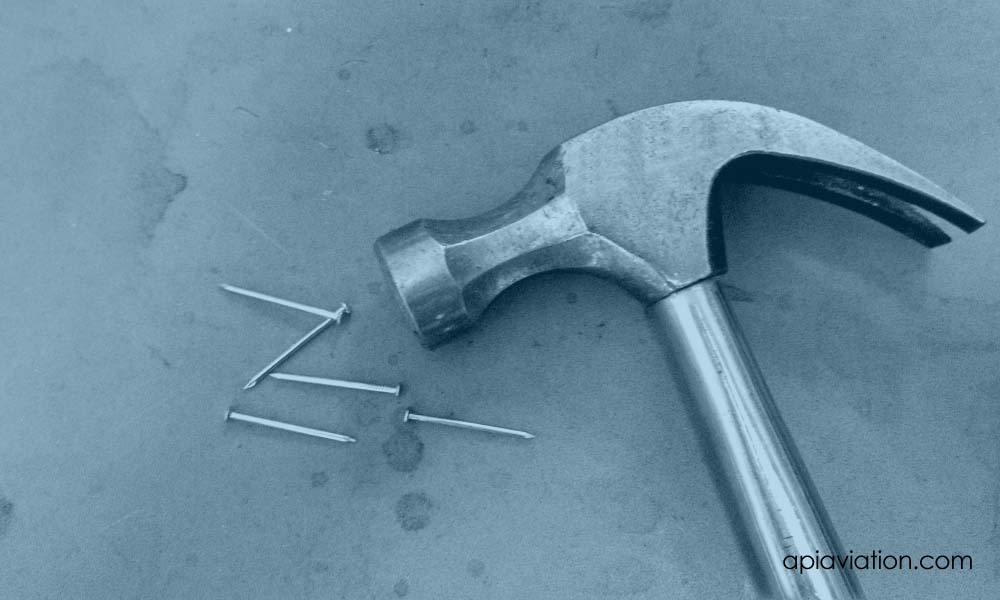Finding and using “the right tool for the job” is a bit of advice that’s as accurate as it is old. And it doesn’t only apply to the working trades, like carpentry or plumbing; it’s equally applicable when you’re talking about the right tools, techniques and strategies to help you screen and hire job candidates more successfully.
Here at API, over four decades of successful experience identifying, assessing and recommending new hires for our clients has taught us a lot about what works and what doesn’t.
We enjoy the great advantage of having tried and proven many strategies to put the right person in the right job, time and again.
So, as a hiring manager, what tools should you have in your arsenal?
Here, in no particular order, are nine that we know will absolutely help.
1. LinkedIn Profile
Take a good long look at your LinkedIn profile. Is it crafted in such a way that it lets jobseekers know that you’re a leader in your industry whom team members want to follow? Is it up to date? And are you using it to search for candidates? Are you reviewing the profiles of your top candidates? How do they present themselves online (and in other social media profiles)?
It also helps to know what your own company is posting on LinkedIn so you can know what’s being said about the organization you represent.
2. Salary Surveys
Don’t fail to use salary surveys to research competing flight departments. Get to know the compensation practices of other operators on your field as well as those in your operating category (e.g., other Global Express operators). Wouldn’t it be impressive to prospective employees if you could benchmark your compensation package against the competition? For example, it would be extremely attractive to new hires if you articulate that you pay at least 25% more than the average range for Global captains in your area.
3. Glassdoor.com
Glassdoor.com is one of the largest and fastest growing job and recruiting websites in use today. Check out what’s being said about your company online so that you can be prepared to respond to questions that might arise.
4. Aviation Recruiting Experts
A recruiter such as API can help you to professionally assess your culture, your hiring needs, your compensation package needs and much more. In fact, an outside recruiter can often help you make a decision between using internal and external candidates. Companies like API provide an objective opinion and fully vet both passive candidates (those with jobs) and active ones who are looking for a new role. It’s a recruiter’s job to know who’s who so that the best candidates that meet your organization’s needs rise to the top of your list.
5. Job Descriptions
Our friends at the business aviation consultancy, Gray Stone Advisors, have outlined exactly what should go into your aviation-specific job descriptions. Make sure to review what are the keywords and phrases included in job descriptions that will help your HR partners to more effectively select candidates and profile resumes.
6. Strategic Planning
Ensuring that your aviation organization is aligned with corporate (or the high-net-worth individual) requires communication with your reporting executive as well as some strategic planning on your part. What are your client’s travel needs in 2016 and beyond? How are you creating value for your parent company now, and how might their needs change over time? For example, if your firm plans to expand national locations (or even go into new international markets), a new aircraft may need to be in your strategic plan. Planning for the short- and long-term will help you determine budgetary and headcount needs. Additionally, if you have pending retirements in the next year or two, you will need a succession plan.
7. Your HR Partners
It’s always a good thing to recognize the importance of being aligned with your HR colleagues, and build a solid communication with them to make them aware why aviation is so different, in so many respects, from other departments.
8. Evaluation Plans
Never underestimate the importance of developing a comprehensive plan for candidate evaluation. Here at API, we call them a hiring scorecard. Who will candidates see, why will they see them and for how long? What should each interviewer be attempting to learn from candidates (e.g., skills, culture, communication style, etc.) Remember: the more consistent one is in how he or she evaluates, the better the decisions that will be made. Make sure everyone in the process is fully committed.
9. Company Culture
Lastly, make sure you know your company’s culture and mission forwards and backwards, and be able to clearly articulate it. How does the aviation department contribute to its overall success? The key to success for attracting and retaining talent is to ensure you get the cultural fit right.
Check your “Toolbox”
In summary, as simple an analogy as it might seem, I hope I’ve made the point that a “toolbox” can have more in it than mere hammers and wrenches. It can be just as valuable to help finish the job at hand if we can apply the leverage good practices, techniques and programs offer us.
Just remember that no matter what industry or business we might find ourselves in, as hiring managers, the toolboxes we assemble and use can make an extraordinary difference in the candidate we’re considering and, more generally, in the job we perform.

